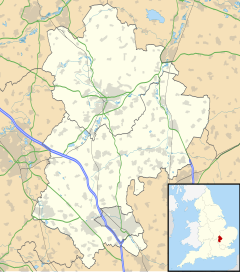Brickhill
| Brickhill | |
|---|---|
 Brickhill Community Centre |
|
| Brickhill shown within Bedfordshire | |
| Population | 8,678 8,153 {2011 Census. Ward & Parish} |
| OS grid reference | TL053521 |
| Unitary authority | |
| Ceremonial county | |
| Region | |
| Country | England |
| Sovereign state | United Kingdom |
| Post town | BEDFORD |
| Postcode district | MK41 |
| Dialling code | 01234 |
| Police | Bedfordshire |
| Fire | Bedfordshire and Luton |
| Ambulance | East of England |
| EU Parliament | East of England |
| UK Parliament | |
Brickhill is a civil parish and electoral ward within northern Bedford in Bedfordshire, England.
The boundaries of Brickhill are approximately Kimbolton Road to the east, Bedford Park and the old Bedford cemetery to the south, with Cemetery Hill and the Manton Heights Industrial Estate to the west. The Woodlands Park housing estate (off Tyne Crescent) became part of Brickhill parish in 2015.
The name 'Brickhill' derives from 'Brickhill Farm' which occupied the land before the area was developed. 'Brickhill' may have been a reference to brick-making in the area, as the neighbourhood has a high clay content in its soils. Brick-making used to be a major industry in Bedfordshire (See Stewartby). The name may also derive from a compound of Brythonic and Anglo Saxon origins, which is a common occurrence in this part of the country. The Brythonic breg means 'hill', and the Anglo Saxon hyll also means 'hill'.
Brickhill Farm was the location of Brickhill House, a 17th Century make-over of a much older manor house. The residence was the seat the Foster family, and it was in its heyday in the 1820s, when the famous American author, Washington Irving, came to pay court to the daughter of the house, Emily Foster (she turned him down). The house was eventually destroyed by fire in 1946.
Following World War II momentum grew in Bedford to plan the re-development of the town from its population of 58,000 to 75,000. This required the provision of a substantial area of land for housing development. At the time, Bedfordshire County Council (who were the planning authority) attempted to pursue Bedford Borough Council to consider development on areas of clay sub-soil around northern Bedford, and in particular across Brickhill. There initially appeared to be great resistance to this. Traditionally buildings in Bedford had been founded on areas of River Terrace gravels, and it was thought in 1949 that the cost of the foundations excavated into the Boulder Clay/Blue Oxford Clay would add approximately £70 to the cost of constructing a house. Since no viable alternative could be found by the Borough they eventually accepted the County's proposals for development of the Brickhill area.
...
Wikipedia

